Free Dropshipping Tool
Dropshipping Profit Calculator
How much money can you make with dropshipping?
Use this profit calculator for dropshipping to find out your potential earnings!
Your monthly profit:
There are no limits - all you need is to get started! Want to know how to increase your ROAS?
YES, I WANT IT!Dropshipping Profit Calculator are based on the following assumptions:
- In general, aliexpress includes 8% cashback.
- AliExpress cashback depends on the product category, country, and the number of purchases.
- Profit = AliExpress price * monthly sale * margin + AliExpress price * monthly sale * 8 %.
- If your aliexpress does not include cashback, then you need to subtract AliExpress price * monthly sale * 8 %.
Note: Profit is calculated by subtracting your sales from the fees you pay to your suppliers.
How to calculate dropshipping profit?
-
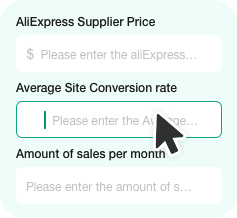
Enter your dropshipping data
Enter any of the aliexpress price, margin and sales on the text field.
-
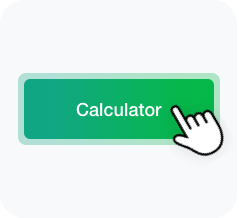
Calculator the profit
Click "CALCULATOR" and watch its profit appear on your screen!
-
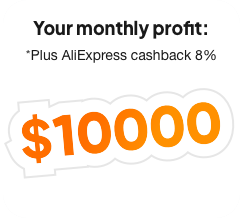
Get your profit
View and record your targeted profit.
What Is Dropshipping profit?
Dropshipping profit refers to the amount of money a business makes by selling products to customers using the dropshipping model. In dropshipping, the retailer does not hold inventory but instead purchases products from a third-party supplier who ships the products directly to the customer.
It is important to note that the profit margin in dropshipping can vary widely depending on the product, the supplier, and the retailer's marketing strategy. Some retailers may have a higher profit margin because they have negotiated better wholesale prices with their suppliers, while others may have a lower profit margin due to intense competition or high marketing costs. Ultimately, the success of a dropshipping business depends on its ability to generate sufficient revenue to cover its expenses and earn a profit.

How Is Dropshipping Profit Calculator?
The formula for the Dropshipping Profit Calculator is:
Profit = AliExpress price * monthly sale * margin + AliExpress price * monthly sale * 8 %.
In general, aliexpress includes 8% cashback.
If your aliexpress does not include cashback, then you need to subtract AliExpress price * monthly sale * 8 %.
Note: Profit is calculated by subtracting your sales from the fees you pay to your suppliers.
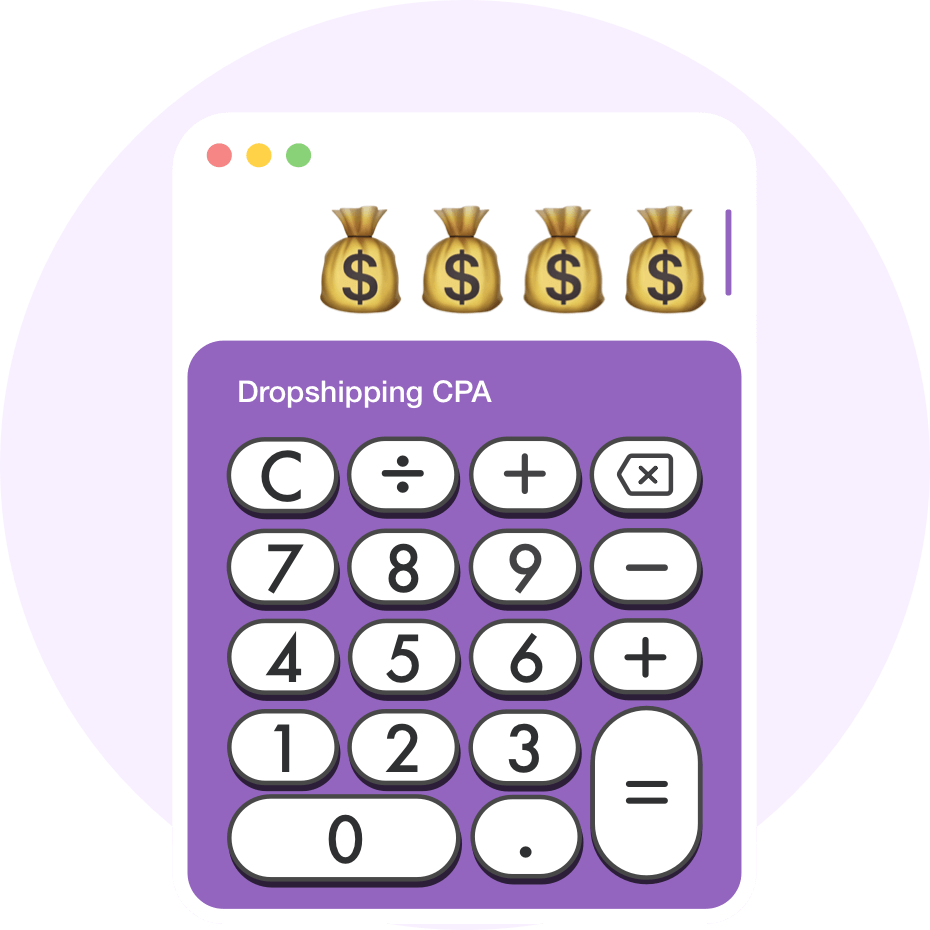
Our Dropshipping Profit Calculator?
-
Aliexpress Supplier Price
is the price of the item you purchased from AliExpress.
-
Your Margin
is your estimated average profit margin per item sold.
-
Amount of sales per month
is the total number of sales in a month you sell.
-
Your monthly profit
is your estimated average profit margin per item sold.
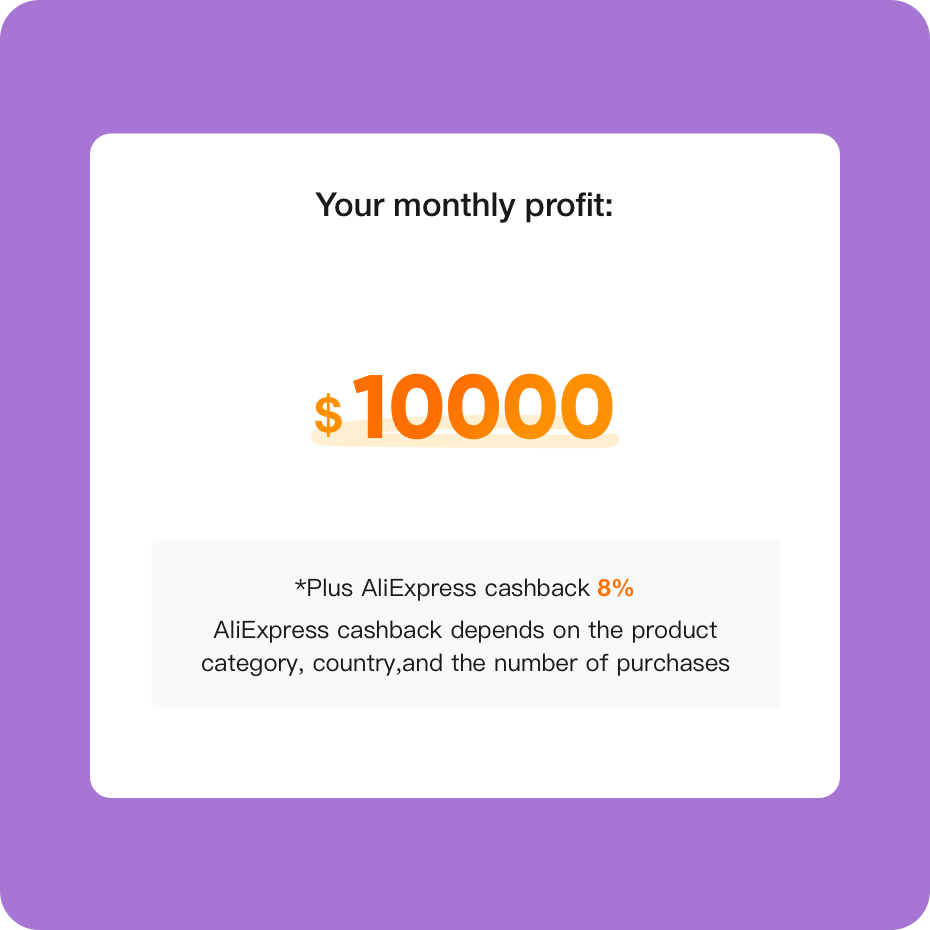
Other free tools
- Shopify Theme Detector
- Shopify App Detector
- Dropshipping Traffic Calculator
- Dropshipping Cpa Calculator
- TikTok Ad Cost Calculator
- Dropshipping Profit Margin Calculator
- Shopify Privacy Policy Generator
- Shopify Refund Policy Generator
- Shopify Returns Policy Generator
- Shopify Terms and Conditions Generator
- Shopify Shipping Policy Generator
Frequently Asked Questions
Calculating the profit from dropshipping involves taking into account the cost of the product, the shipping cost, and the amount you sell the product for. Here are the steps to calculate dropshipping profit:
- 1. Determine the cost of the product: This is the price you pay to the supplier for the product, including any taxes or fees.
- 2. Determine the shipping cost: This is the cost of shipping the product from the supplier to your customer.
- 3. Determine the selling price: This is the price at which you sell the product to your customer.
- 4. Calculate the profit: Subtract the cost of the product and shipping cost from the selling price. The result is your profit.
The profit that dropshippers can make varies greatly and depends on various factors such as the product niche, marketing strategies, and pricing strategy. Some dropshippers make a few hundred dollars per month, while others can make thousands or even millions of dollars per year.
The profit margin in dropshipping typically ranges from 10% to 30% of the selling price. However, some products may have a lower profit margin, while others may have a higher profit margin.
It's important to note that dropshipping involves several costs, including product costs, shipping costs, website maintenance costs, advertising costs, and transaction fees. These costs can significantly affect the profit margin, and dropshippers need to take them into account when calculating their profits.
Ultimately, the amount of profit a dropshipper makes depends on their ability to identify profitable products, their marketing and advertising efforts, and their ability to manage costs effectively.
Dropshipping can be profitable, but it's important to understand that it's not a get-rich-quick scheme, and success is not guaranteed.
Dropshipping can offer several benefits, such as low startup costs, flexibility, and the ability to sell a wide range of products without holding inventory. However, it also has its challenges, such as high competition, low-profit margins, and shipping and fulfillment issues.
The profitability of dropshipping depends on several factors, such as the product niche, pricing strategy, marketing and advertising efforts, and the ability to manage costs effectively. Dropshippers who are able to identify profitable products, target the right audience, and create effective marketing campaigns can make a significant profit.
Overall, dropshipping can be a profitable business model, but it requires hard work, dedication, and a sound business strategy to succeed.
It's difficult to determine the exact success rate of dropshipping because it varies depending on the individual business and the industry they are in. However, it's worth noting that dropshipping, like any other business, requires hard work, dedication, and a sound business strategy to succeed.
There are several factors that can affect the success rate of dropshipping, including product selection, marketing and advertising efforts, pricing strategy, shipping and fulfillment issues, and customer service. Dropshippers who are able to effectively manage these factors are more likely to be successful.
It's also worth noting that dropshipping has become more popular in recent years, leading to increased competition. This means that dropshippers need to work harder to stand out and compete effectively in their niche.
Ultimately, the success rate of dropshipping depends on the individual business owner's ability to identify profitable products, target the right audience, and create effective marketing campaigns, as well as their ability to manage costs and provide excellent customer service.
The profitability of a Shopify dropshipping business can vary widely depending on many factors, such as the product niche, marketing strategies, pricing, and competition. Therefore, it is difficult to determine an average profit figure for all dropshippers.
However, a commonly cited benchmark is a profit margin of 20% to 30% on each product sold. This means that if you sell a product for $50, your profit margin would be between $10 and $15. Some successful dropshippers can achieve higher profit margins, while others may struggle to break even or even incur losses.
It's also worth noting that running a successful dropshipping business on Shopify requires a lot of hard work, dedication, and experimentation. You'll need to continually optimize your store, product offerings, marketing campaigns, and customer service to maximize your profits.
The formula for profitability is:
Profitability = (Profit / Revenue) x 100
Where:
Profit is the amount of money that is left over after deducting all expenses from the revenue. Revenue is the total amount of money earned from sales.
The profitability formula calculates the percentage of profit generated for each dollar of revenue. It is a crucial metric for businesses as it measures their ability to generate profits from sales.
For example, if a business generates $100,000 in revenue and has a profit of $20,000, the profitability can be calculated as:
Profitability = (20,000 / 100,000) x 100 = 20%
This means that for every dollar in revenue, the business generates 20 cents in profit. A higher profitability percentage indicates that the business is more efficient in generating profits from sales.
A good profit margin varies widely depending on the industry, business size, and the competitive landscape. Generally, a higher profit margin is considered better because it indicates that the business is able to generate more profit for each dollar of revenue.
A good profit margin for a business depends on several factors, including:
- 1. Industry: Different industries have different average profit margins. For example, industries with high overhead costs, such as manufacturing, may have lower profit margins than service-based businesses.
- 2. Business Size: Small businesses may have lower profit margins compared to larger businesses due to economies of scale.
- 3. Competitive Landscape: If a business operates in a highly competitive market, it may need to lower its profit margins to remain competitive.
As a rule of thumb, a profit margin of 10% to 20% is generally considered a good profit margin for most businesses. However, this can vary widely depending on the factors mentioned above. It's important to benchmark your profit margins against industry averages and competitors to determine what a good profit margin is for your specific business.